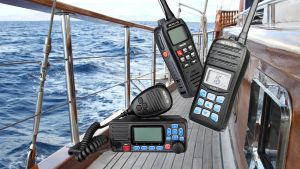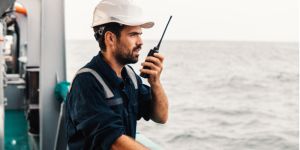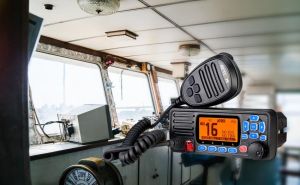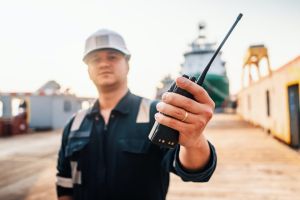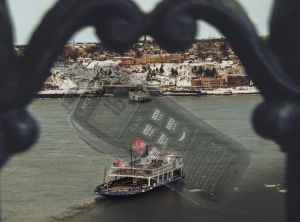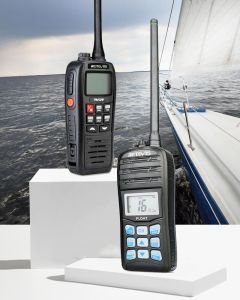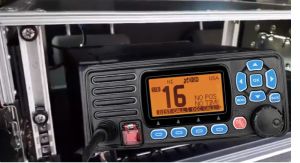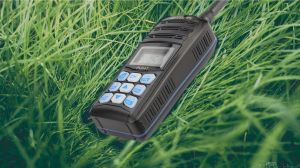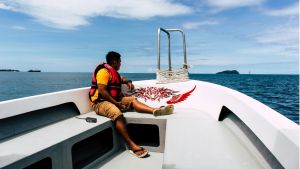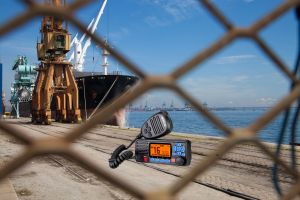Author
Guidance For Marine Radio Distress
- Apr 26,2021
- Leeric
- 0 Comments
- Maritime knowledge
The Royal Yachting Association (RYA) has recently published guidance about marine radio distress relays on their website. The changes follow on from a consultation between the Maritime and Coastguard Agency (MCA), the Association of Marine Electronic and Radio Colleges (AMERC) and the RYA itself. As a result, the RYA has issued revised guidance regarding the procedure for sending a ‘Distress Relay’. ...
Carry A Calling Device For Help At Sea
- Apr 26,2021
- Leeric
- 0 Comments
- Maritime knowledge
The ability to call for help or signal for assistance is imperative. With a VHF or DSC radio you can transmit a Mayday call to the Coastguard and other vessels and a distress or emergency beacon will transmit your location to the search and rescue services. ...
Minium qualification for a maritime coast licence
- Apr 15,2021
- Leeric
- 0 Comments
- Maritime knowledge
Now, if you want to use VHF marine radio, you must have relevant certificates. If you don't have relevant certificates, you will encounter some troubles. So how can we get the relevant documents and what are they? Now we have taken Australia as an example to introduce some documents. ...
The Major Parts Of Marine Radio Equipment
- Apr 15,2021
- Leeric
- 0 Comments
- technology suggestion
Marine radio equipment operating in the VHF band is made up of three major parts: The power supply The transceiver The antenna or aerial ...
Offshore Marine Communication Systems
- Apr 09,2021
- Leeric
- 0 Comments
- entertaining information
The latest standards for long distance offshore marine communication systems have changed over the years; are you up to date with the latest safety standards? Flags and semaphores were once main forms of long distance offshore marine communication. Radio telecommunication has seen a huge rise over the last century, thanks to advances in technology, leading to the vast changes that increase overall safety. ...
Why VHF marine radios are used out at sea
- Apr 09,2021
- Leeric
- 0 Comments
- entertaining information
Anything can happen out on the water. Thankfully, two-way radios offer marine solutions to keep your crew safe, well-connected, and prepared to respond to an emergency. To keep vessels and the lives they transport as safe as possible, there are several systems and technologies working together for both ship-to-ship and ship-to-shore communications. ...
Marine VHF Radio Of The Retevis RA27
- Apr 09,2021
- Leeric
- 0 Comments
- Maritime knowledge
The Retevis RA27 offers everything you could ever want from a VHF marine radio. The sound quality is impeccable! Plus, the radio has an adjustable multicolor LCD screen, integrated GPS, and DSC. It can be used on VHF bands. The adjustable audio feature allows clear messages to be communicated across the noisiest environments. The internal speaker has a rated output of 3W, hence why sound quality is so sufficient. ...
4 Benefits of working with our marine communication consultants
- Apr 09,2021
- Leeric
- 0 Comments
- Maritime knowledge
Our goal throughout the consulting and assessment process is to determine the most cost effective and efficient solution to meet your needs. If privacy is of greatest concern, we have you covered! If you’re more concerned with communication reliability… no need to worry! Our team has vast experience with design, installation, and follow-up service—allowing you to provide greater attention and oversight to safety. In fact, we have delivered countless custom radio systems and solutions. ...
How the frequency of marine radio works
- Mar 31,2021
- Leeric
- 0 Comments
- technology suggestion
Marine radios have transmitters that send out radio waves and receivers that pick up radio waves. The radio waves produced will have a set frequency. Specific groups of frequencies behave differently. For marine radio we group frequencies as: Very high frequency (VHF), Medium frequency (MF), High frequency (HF). ...
Distress Alert
- Mar 31,2021
- Leeric
- 0 Comments
- technology suggestion
Distress alerts may be transmitted as a single frequency or a multi-frequency call attempt preceded by a dot pattern. MF/HF equipment should be capable of using both single and multi-frequency call attempts. Where a distress alert attempt contains more than one consecutive distress alert on the same frequency, these consecutive alerts should be transmitted with no gap between the end of one call and the start of the dot pattern of the following call to enable bit synchronization to be maintained ...

